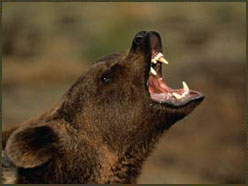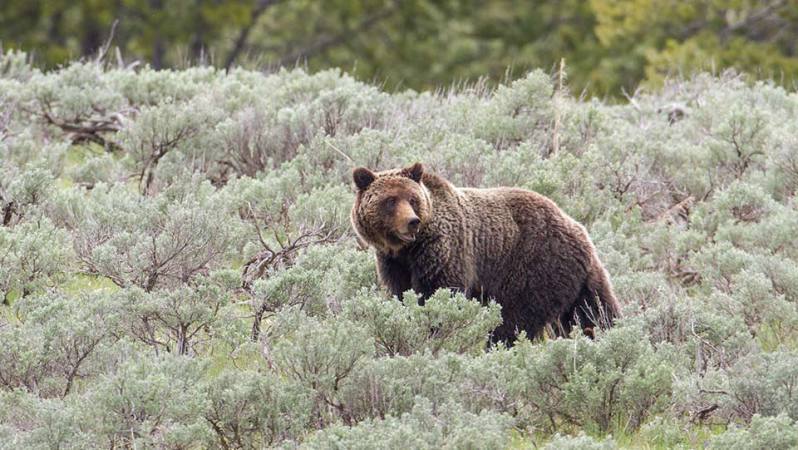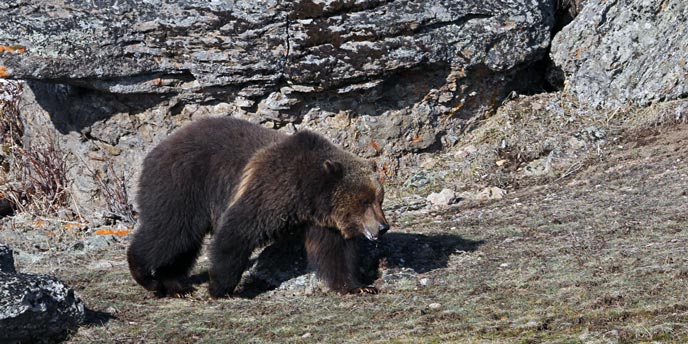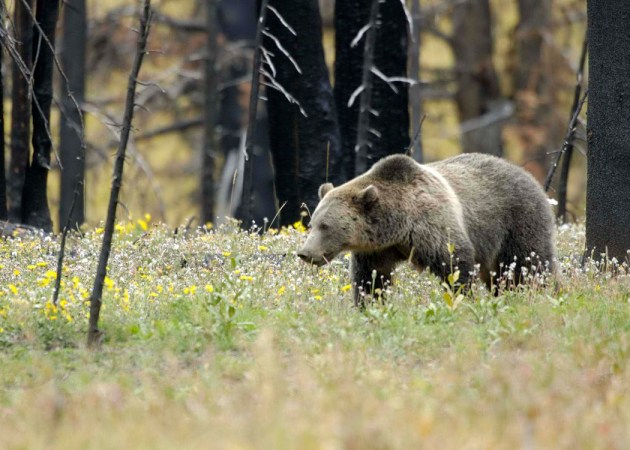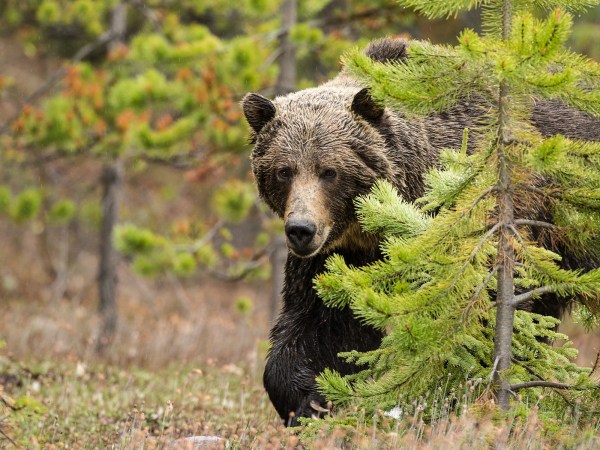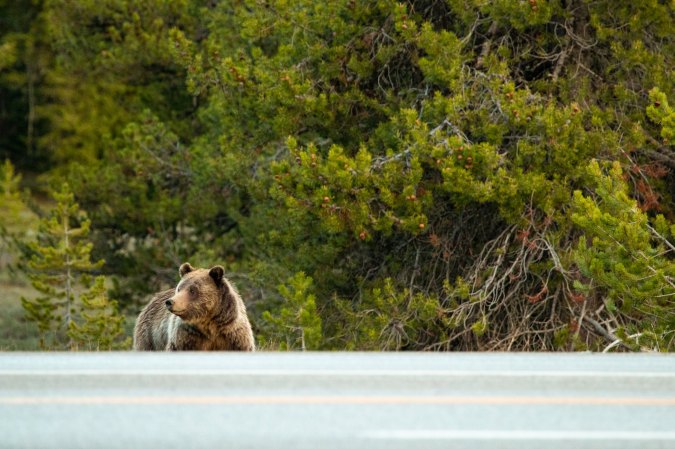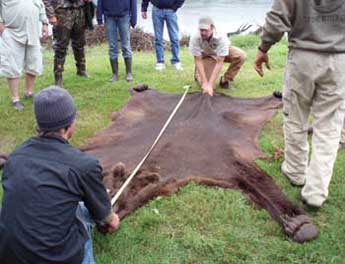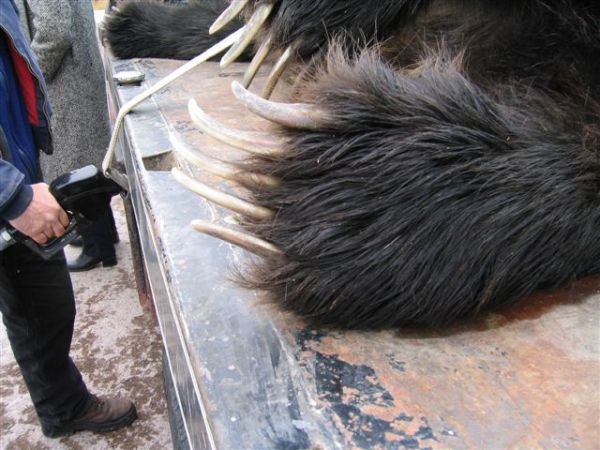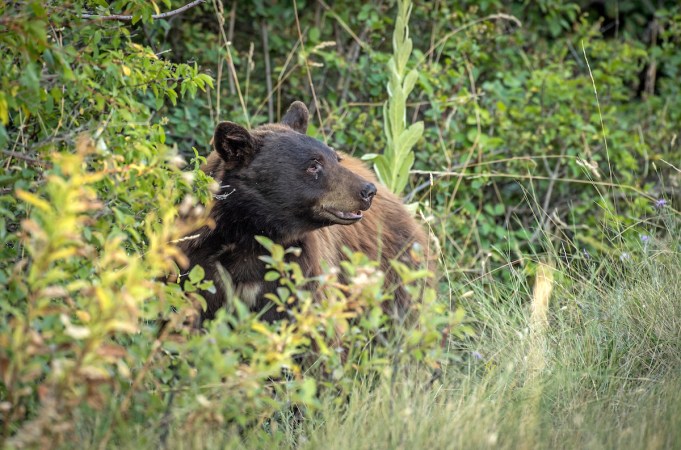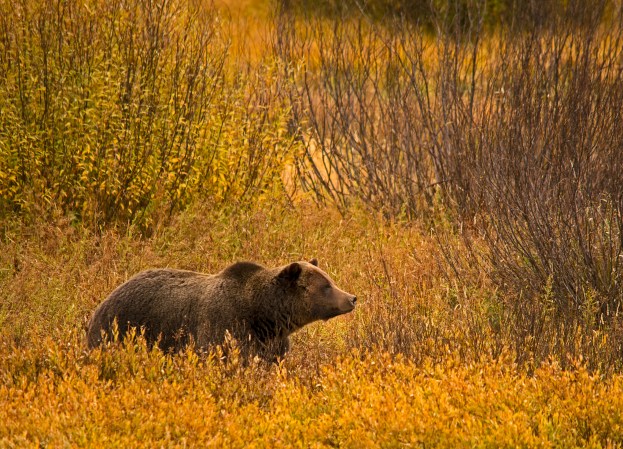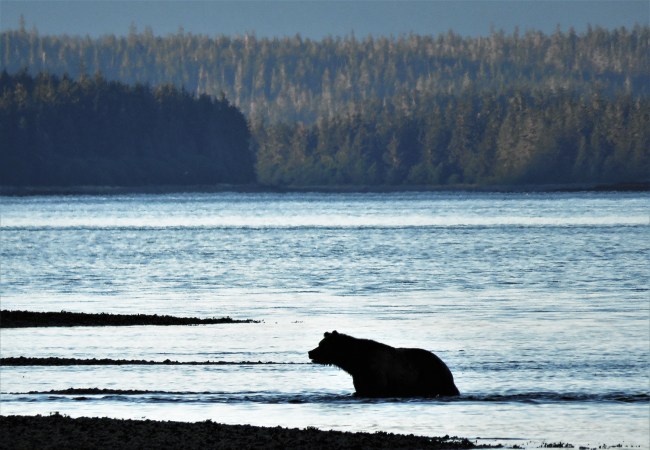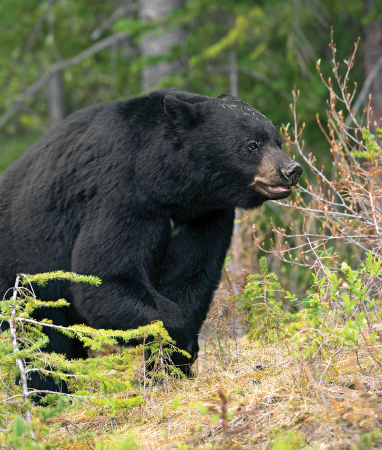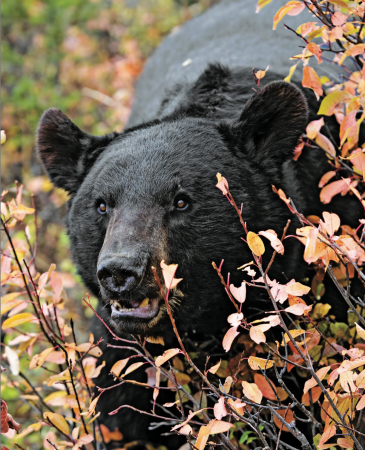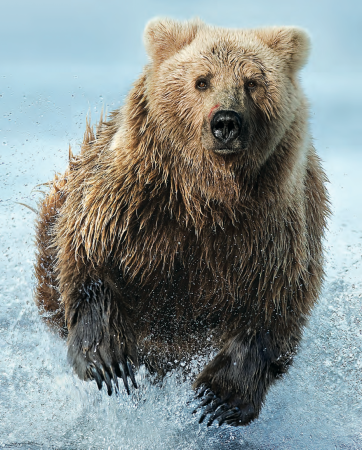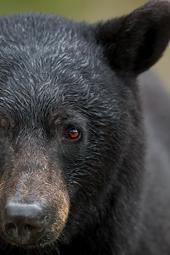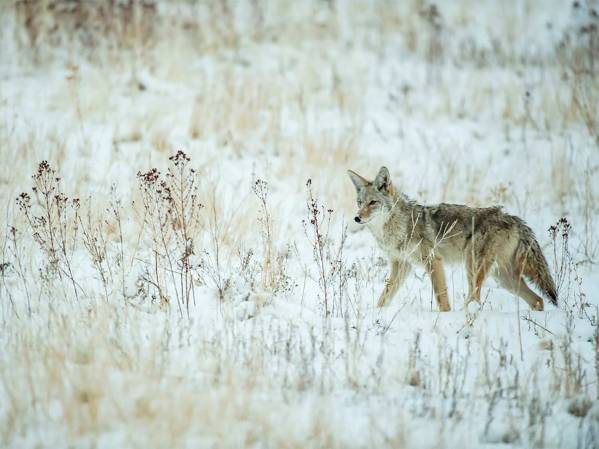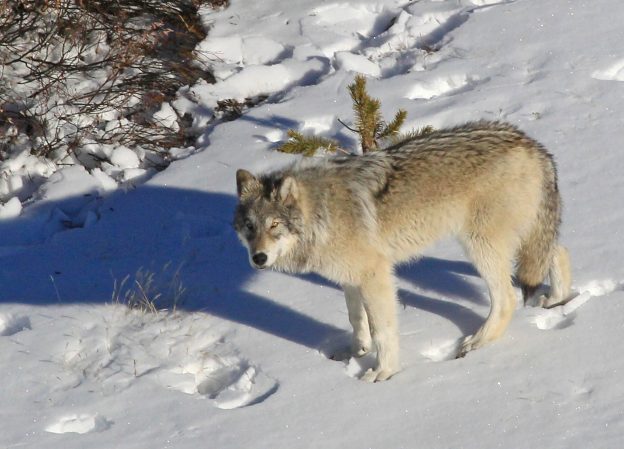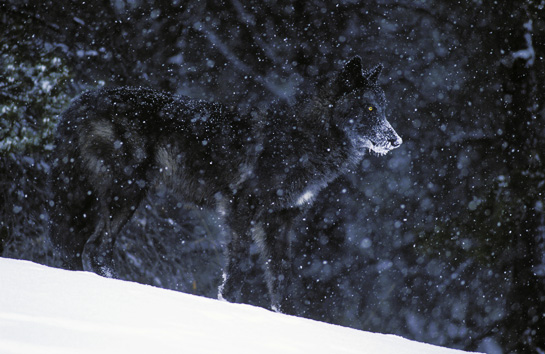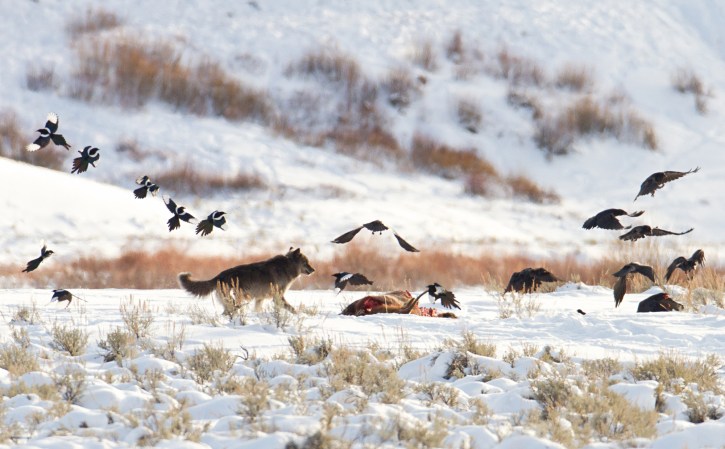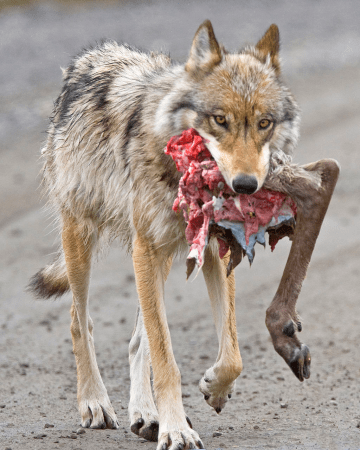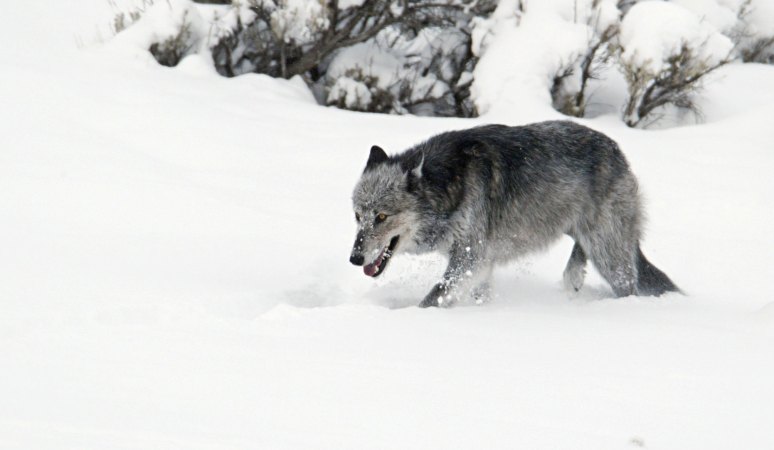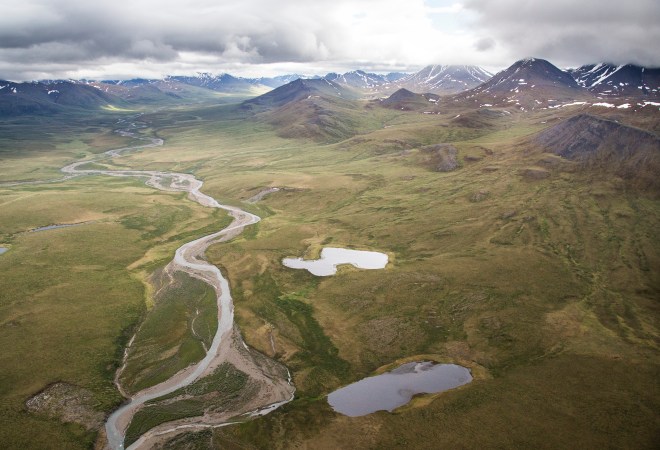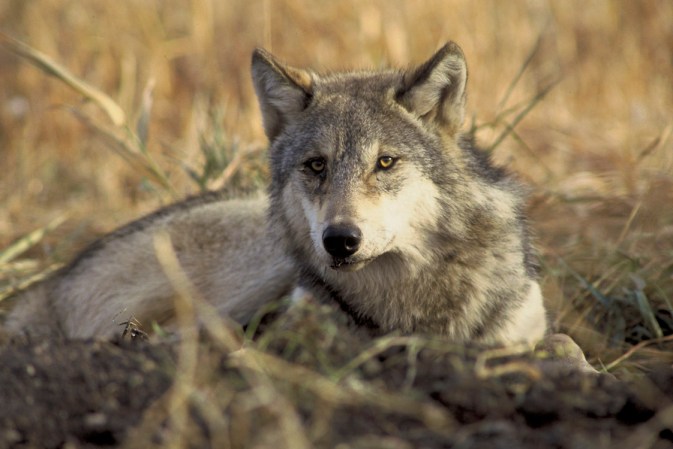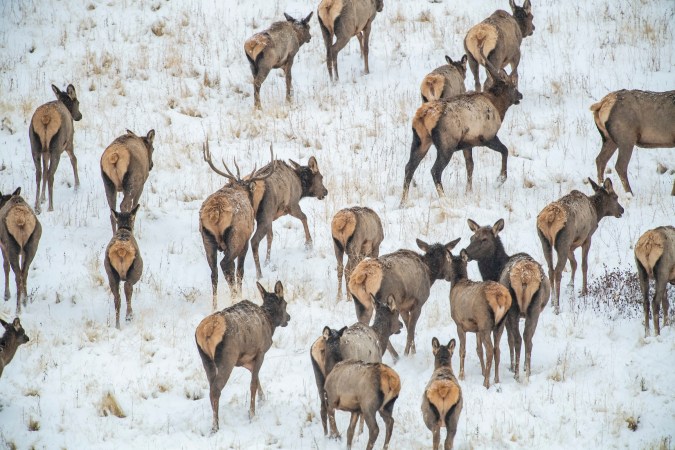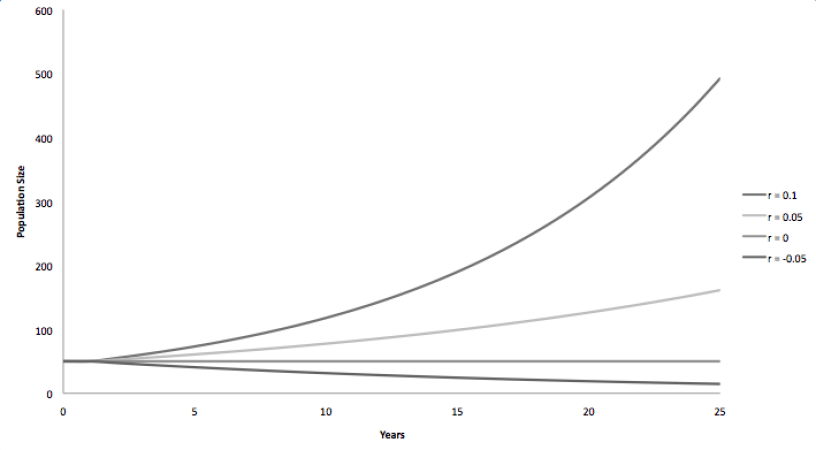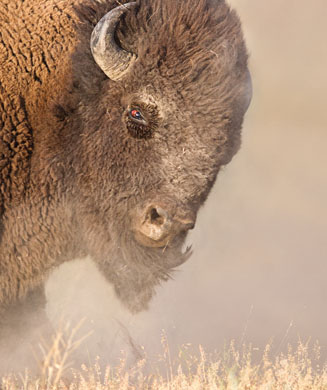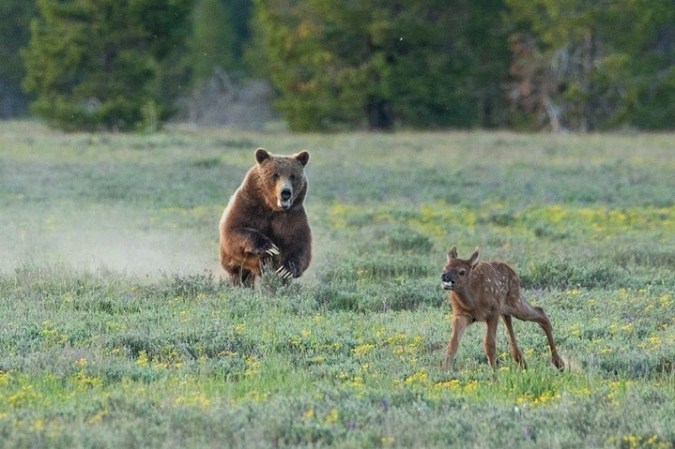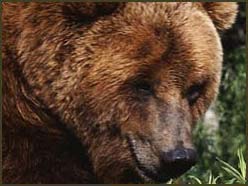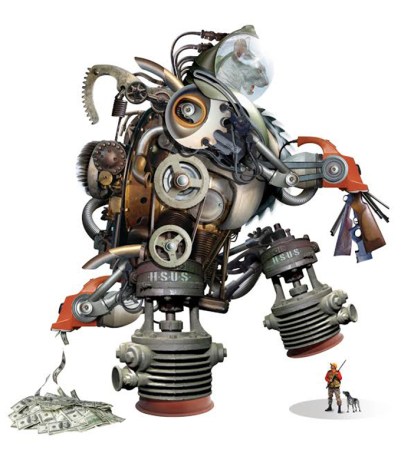Grizzly bears and hunters have always had a special relationship. On those rare occasions before the advent of firearms when a solo hunter did kill a grizzly, it was considered a quasi-magical event in which the strength and prowess of the bear was transferred to the warrior. Later, as grizzly numbers suffered during the settlement of the West, the voice of the hunter was among the first to be raised in the animal’s defense. Today, with grizzlies on the cusp of removal from the Endangered Species Act’s “threatened” list, hunters and grizzlies are linked more closely than ever. Hunters will play a key role in the future management of the bear-helping to control not only its numbers but public perception as well, especially in places where grizzlies and people overlap. And hunters are more likely than others to suffer the consequences of sharing the woods with this resurgent predator. The death last year in Montana of a bowhunter who was killed by a grizzly while gutting an elk is a graphic reminder of the risks of spending time in bear country. In coming years the fate of the grizzly will be, in large measure, in the hands of the hunter.
Decline of the Grizzly
How did sportsmen come to play such a critical part in the recovery of the grizzly? Our role as stewards has its roots in the animal’s decline. The arrival of white explorers-and the rifle and gunpowder technology they carried-marked the end of the grizzly’s uncontested dominance. As the West was settled, grizzlies rapidly lost ground. The wholesale slaughter of the buffalo, on which the silvertips of the Great Plains depended, pushed the bears off the prairie. Trappers and settlers, equipped with their Hawken, Sharps and, later, Henry rifles, further constricted grizzly country, and the bears withdrew to the rugged and inhospitable mountain terrain we associate them with today.
At the turn of the 20th century the species was in full retreat. Worshipped as deities because of their legendary strength by some Native Americans, grizzlies, ironically enough, were nearly swept from the Lower 48 by the meek and wholly uninspiring sheep. The height of the domestic sheep industry in the 1920s and ’30s marked the low point for grizzly numbers in the contiguous United States. Sheepherders vied for the same land the grizzlies established as their last strongholds and, as was inevitably the case when humans and bears came into conflict during the modern age, the bears lost out. Grizzlies were shot, snared and poisoned just about wherever they were encountered.
After the crash of the domestic sheep industry in the 1930s, grizzly numbers languished. Some states were slow to manage grizzlies as game animals, viewing the bears as pests and continuing with a policy of eradication.
Grizzlies in the Lower 48 were finally afforded federal protection in 1975 when they were listed as “threatened” under the Endangered Species Act (ESA). As with other species of North American game that had fallen on hard times-whitetails, antelope, wild turkeys and waterfowl, to name a few-conservation-minded hunters worked to protect the grizzly.
Outdoor Life’s founding editor, J.A. McGuire, along with figures such as Theodore Roosevelt, was an early champion of the great bears. In 1915, McGuire acted to establish limits on bear trapping and hunting by drafting legislation to be introduced in state assemblies across the nation. Montana was the first in the Lower 48 to heed the call when it designated the grizzly a game animal in 1923. Like many other hunters, McGuire recognized that grizzlies were not simply vermin to be wiped out and that the threat many felt the bears posed was not warranted. That sentiment is as true today as it was then.
“Hunters have a big stock in grizzly recovery-they are a key part of this process,” says Chris Servheen, grizzly bear recovery coordinator with the United States Fish a Wildlife Service (USFWS) in Montana. The states that will manage the grizzlies after they are removed from the threatened list-Montana, Wyoming and Idaho-certainly agree. As Montana’s draft proposal for grizzly bear management states: “Regulated harvest will be a part of our long-term conservation program…(this) has been and continues to be one of the major tools that allows the recovery and maintenance of predators and prey populations in Montana and elsewhere.”
But the benefit to hunting grizzlies goes way beyond simply controlling numbers. Hunted grizzlies will be more wary of humans, which will lower the likelihood of human-bear conflicts. This is one of the highest priorities for wildlife officials-to minimize the social friction caused by having bears in proximity to people. “When you get a lot of fear of the bear, it turns into resentment of the bear. And you can’t make it a ‘bears or people’ issue or the bears will lose every time,” says Harry Harju, a Wyoming state wildlife biologist. In other words, not only will hunted bears be less likely to develop into problem bears, but hunting bears helps build and maintain support for having the bears around in the first place.
The importance of cultivating public support for the bears was driven home by the failed push during the late 1990s to reintroduce grizzlies to Idaho’s Bitterroot Mountains, which is the best unoccupied grizzly habitat left in the United States. The feelings that fueled that opposition-a mixture of resentment over federal control, NIMBY (“not-in-my-backyard”) politics, concerns about the loss of jobs and economic growth and fear by some of the bear itself-are feelings that grizzlies will potentially stir up everywhere they come into contact with people.
The states are also looking to hunters to conserve bear habitat-something we as a group have done already for decades in and around the grizzly ecosystem. “Hunters have purchased more habitat than any other group in the greater Yellowstone ecosystem and returned it to wildlife use including (for) grizzly bears,” say the authors of Montana’s grizzly management plan. “This strong connection between hunters and habitat is critical to the continued successes at restoring grizzly bears. Hunting gives direct ownership for the welfare of this species to some of the most ardent supporters of wildlife in Montana.”
Hunters also shoulder a special burden for the welfare of grizzlies because we’re the most likely to encounter them in the wild. As a result, we need to be smarter than, say, mountain bikers, about coexisting with the bears. “Hunters are the armed individuals in bear habitat. Hunters do what we tell people not to do: They sneak around at dawn and dusk, moving stealthily and hauling around carrion,” Servheen says. “So hunters have to be aware of how to hunt in grizzly habitat.”
Delisting
Grizzly hunting isn’t going to be reinstated overnight-the first hunt is still many years away. But grizzlies today are undeniably on the rebound. Their numbers are growing and the bureaucratic wheels are in motion to remove them from the threatened species list. Their range is expanding, too. Grizzlies are being seen in areas where they haven’t been documented in 50 years or more. But while the move to delist the grizzly is well under way, it is not complete. The USFWS anticipates that grizzlies will revert to state management in 2005, provided the rest of the process goes smoothly. Over the course of 2002, the three states that will manage the Yellowstone population of bears developed plans that will be meshed together as part of an overarching conservation strategy. (Grizzlies will continue to be considered threatened in the four other ecosystems in the Lower 48 where they live.) Wyoming and Idaho’s plans are already complete and Montana’s Fish and Game Commission is expected to sign off on that state’s plan soon.
Once all the state plans are approved, two major steps remain, according to Servheen. One is the critical issue of properly counting the bears. For years this has been a sticking point, in which emotion and politics have threatened to trump sound science (see sidebar below). Currently, bears are counted visually by trained spotters. Biologists then extrapolate an overall population figure based on how many bears they see. Historically, these numbers have represented what is known as the “minimum” population figure- in other words, it is a super-conservative tally of the bear population. The goal for the future is to get an accurate reading of the bear population in the Yellowstone area, and in order to do that, biologists need to recalibrate their survey techniques, Servheen says. Pegging the number at the correct level-and navigating through the political in-fighting this adjustment is certain to create-will take as long as a year. Under the current survey methodology, the greater Yellowstone ecosystem holds about 500 to 600 of the estimated 1,200 or so grizzlies in the Lower 48, according to Servheen. What that number will “grow” to be under the new counting system is still unknown. This new bear census will serve as the benchmark by which the success of the management practices are judged and will in turn be used to set hunting quotas. Under the conservation strategy, no more than 4 percent of the bear population can be removed by “human-caused” mortality in a year. This includes everything from the bear that is killed by an 18-wheeler crossing a highway to the food-habituated grizzly that needs to be put down.
The other step along the path toward delisting is the responsibility of the U.S. Forest Service, which will need to modify its forest plans for the federally managed forests in the greater Yellowstone ecosystem. The Forest Service will need to adopt policies that are in tune with the grizzly conservation plan on issues such as development, logging and road building to protect grizzly habitat. For example, the status of white-bark pines, the nuts of which are a major food source for grizzlies, will be closely monitored. (Other major food sources for the Yellowstone-area grizzlies include elk and deer-especially newborns in the spring-spawning cutthroat trout and army cutworm moths. Grizzlies eat the apparently tasty moths like potato chips, consuming up to 40,000 per day.) After these hurdles are crossed, the move to delist the bear can proceed.
Of course, not all are happy with the prospect of the bears coming off the list. “You have the grizzly bear groupies who make a lot of money off the bears and don’t trust the states to manage them correctly,” says Harju. “Same goes for the conservation groups. They know that you’re going to raise a hell of a lot more money for a grizzly bear than a prairie dog. No amount of >
Once all the state plans are approved, two major steps remain, according to Servheen. One is the critical issue of properly counting the bears. For years this has been a sticking point, in which emotion and politics have threatened to trump sound science (see sidebar below). Currently, bears are counted visually by trained spotters. Biologists then extrapolate an overall population figure based on how many bears they see. Historically, these numbers have represented what is known as the “minimum” population figure- in other words, it is a super-conservative tally of the bear population. The goal for the future is to get an accurate reading of the bear population in the Yellowstone area, and in order to do that, biologists need to recalibrate their survey techniques, Servheen says. Pegging the number at the correct level-and navigating through the political in-fighting this adjustment is certain to create-will take as long as a year. Under the current survey methodology, the greater Yellowstone ecosystem holds about 500 to 600 of the estimated 1,200 or so grizzlies in the Lower 48, according to Servheen. What that number will “grow” to be under the new counting system is still unknown. This new bear census will serve as the benchmark by which the success of the management practices are judged and will in turn be used to set hunting quotas. Under the conservation strategy, no more than 4 percent of the bear population can be removed by “human-caused” mortality in a year. This includes everything from the bear that is killed by an 18-wheeler crossing a highway to the food-habituated grizzly that needs to be put down.
The other step along the path toward delisting is the responsibility of the U.S. Forest Service, which will need to modify its forest plans for the federally managed forests in the greater Yellowstone ecosystem. The Forest Service will need to adopt policies that are in tune with the grizzly conservation plan on issues such as development, logging and road building to protect grizzly habitat. For example, the status of white-bark pines, the nuts of which are a major food source for grizzlies, will be closely monitored. (Other major food sources for the Yellowstone-area grizzlies include elk and deer-especially newborns in the spring-spawning cutthroat trout and army cutworm moths. Grizzlies eat the apparently tasty moths like potato chips, consuming up to 40,000 per day.) After these hurdles are crossed, the move to delist the bear can proceed.
Of course, not all are happy with the prospect of the bears coming off the list. “You have the grizzly bear groupies who make a lot of money off the bears and don’t trust the states to manage them correctly,” says Harju. “Same goes for the conservation groups. They know that you’re going to raise a hell of a lot more money for a grizzly bear than a prairie dog. No amount of

